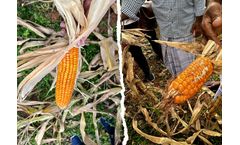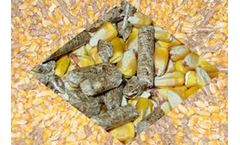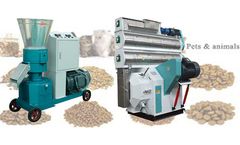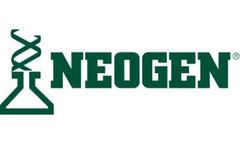Refine by
Corn Harvesting Articles & Analysis
25 news found
On the north-central plains of Sri Lanka, in the small rural village in Galenbindunuwewa, a community of maize farmers are reshaping their farming practices to respond to the growing challenges posed by climate change. They recently welcomed researchers from the International Water Management Institute (IWMI) and a delegation from the United States Department of Agriculture’s (USDA) Food ...
Following the harvest of a small corn field near Quad Country Corn Processors, the ethanol plant recently seeded it once more, only not with corn but with milkweed. ...
Here are several animal feed ingredients as follow: Feed Pellet Making Machine To Make Corn(maize) Corn is the main raw material of animal feed, generally fit accounted for about 60% of the diet. ...
As illustrated above, there were extreme snowfall amounts in North Dakota, and it is likely that a heavy burden of wet snow combined with stress from very high winds (up to 65 mph) caused some physical damage to corn plants. Yield losses will occur from fallen ears or broken corn stalks, and harvest may be very challenging or impossible in ...
Here are several animal feed ingredients as follow: Feed Pellet Making Machine To Make Corn(maize) Corn is the main raw material of animal feed, generally fit accounted for about 60% of the diet. ...
Neogen Corporation (Nasdaq: NEOG) announced today that revenues for the first quarter of its 2020 fiscal year, which ended Aug. 31, were $101,424,000, compared to the previous year’s first quarter revenues of $99,626,000. The first quarter was the 110th of the past 115 quarters that Neogen reported revenue increases compared with the previous year — including all consecutive quarters ...
Many maize harvesters are taking to the fields early this year. Our latest video provides you with top tips for a successful maize harvest, to help you improve your maize quality and reduce waste. Watch the video here. What will you learn? How to achieve the correct dry matter at harvest and assess your crop’s maturity How to reduce aerobic spoilage when clamping by achieving ...
It is becoming ever more popular to harvest maize while it's still green. However there may be different requirements when it comes to silage preservation - do you know how to get the best from your maize harvest? More than three quarters of long-term forage maize growers are now harvesting the crop greener than they used to, according to a new survey of UK dairy farmers. However a substantial ...
In 2017 Gomselmash will produce the first batch of maize ear harvesters “Palesse MS6”, - informed Chief Designer of the research and development center of combine harvesters Sergei Fedorovich. We'll start with five machines “Palesse MS6”. The novelty is intended for maize ear harvesting. The machine has six rows . By the way none of manufacturers produces this kind of ...
Plant Science Technology Highlighted as Key "Tool in the Toolbox" for Smallholder Farmers As Asia and the world prepare to mark World Food Day, CropLife Asia expressed its strong support for the 2016 theme put forth by the Food and Agriculture Organization of the United Nations (FAO) - 'Climate is changing. Food and agriculture must too.' The impact of climate change is increasingly being felt ...
Corn growers operating John Deere group 6 and 7 S-Series Combines now have the option of using an 8-row folding corn head to harvest their crops. ...
Crows are intelligent birds with sharp beaks and talons, making it possible for them to rip into growing corn stalks, damaging your harvest. Learn how to keep crows away from you corn, whether it’s a seedling or a growing stalk. Protecting Corn Seedlings It’s common for crows to dig up corn before ...
Corn residue left over from harvesting can make an excellent source of supplemental feed for livestock, according to a forage expert from the College of Food, Agricultural, and Environmental Sciences at The Ohio State University. This is especially true for producers who are facing lower hay crop inventories thanks to the excessive rains that impacted the region ...
Inexorable pattern Later in the year, as leaves fall, crops are harvested and consumed, and soil is freshly tilled, most of that CO2 gets back into the atmosphere. ...
Livestock producers looking for a relatively easy and inexpensive feed source can turn to harvested cornfields for the answer. The residue left on the field after harvesting corn can be used to meet the nutrient needs of ruminant livestock in early to mid-gestation, according to a forage expert from Ohio State University’s College of Food, ...
A potentially record-setting U.S. corn harvest is underway. Many farmers can attribute the use of cover crops as one of multiple best management practices (BMPs) that help them increase yield year after year. ...
Rootless or “floppy” corn may look questionable, but under the right conditions, it can recover. Corn crops that are leaning or lodged may be impacted by rootless corn syndrome, said Peter Thomison, an Ohio State University Extension agronomist. ...
Nitrogen and phosphate are important fertilisers. But excessive amounts often found in fields and pastures end up polluting the ground and surface water. Furthermore, dairy farmers are squandering their profits by wasting these expensive fertilisers. The Koeien & Kansen [Cattle and Opportunities] project set up by two PhD candidates from Wageningen University, part of Wageningen UR, shows how ...
Markus Renner, Reuth, Germany Markus Renner has a 110-hectare dairy farm with 90 cows in Reuth, Germany. He uses a T203 Direct to harvest corn and grass silage using a 9-metre mowing combination and to spread slurry with a 18-cubic-metre wagon. ...
A country once known for its grass-fed beef is now dominated by soy, corn and cotton. Soy harvests alone have tripled, ranking Argentina as the world's third largest soybean producer. ...
















